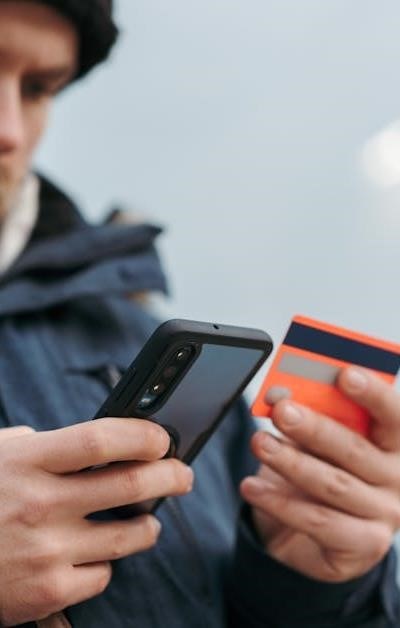
The proliferation of stolen data fuels a shadowy economy centered around “dumps” – compromised payment information traded on the dark web. These aren’t simply lost credit card numbers; they represent sophisticated data breaches impacting individuals globally.
This “buyer’s guide” dissects this illicit world, focusing on the mechanics of acquiring and utilizing compromised data. Understanding the risks, methods, and associated terminology – including CVV, track1, track2, and fullz – is crucial, not for participation, but for comprehending the threat landscape.
The appeal lies in the perceived anonymity offered by tools like VPNs, proxies, and bitcoin, enabling fraud and identity theft. However, this is a dangerous illusion. Illicit marketplaces promise ease, but are rife with scams and law enforcement monitoring.
The Landscape of Stolen Financial Data: Sources and Types
The origins of stolen data are diverse, ranging from large-scale data breaches targeting retailers and financial institutions to more targeted attacks leveraging malware and phishing campaigns. Compromised data frequently originates from vulnerabilities in online security protocols, particularly those surrounding payment information handling. Account takeover, facilitated by stolen credentials, is another significant source, allowing criminals direct access to financial accounts.
Data itself is categorized based on its completeness and utility for fraud. A basic “dump” might contain only a BIN (Bank Identification Number), card number, and CVV. This is often insufficient for successful transactions due to increased card verification measures like AVS (Address Verification System) and 3D Secure. More valuable are “fullz” – comprehensive packages including the cardholder’s name, billing address, date of birth, and potentially even social security number, significantly increasing the chances of bypassing security checks.
Track1 and Track2 data, extracted from the magnetic stripe of a credit card, are critical components. Track1 contains the cardholder’s name, account number, and expiration date, while Track2 includes the account number, expiration date, and CVV. With the rise of EMV chip technology, criminals increasingly target these magnetic stripe equivalents, or seek to compromise point-of-sale systems to capture this data directly. Leaked data can also include login details for various online services, enabling further identity theft and financial exploitation. The underground forums are key distribution points for this information, often categorized by data type and verified for functionality – a process known as validation.
The increasing sophistication of cybercrime means that botnets are frequently employed to automate data harvesting and facilitate large-scale attacks. Understanding these sources and data types is paramount for both preventative data security measures and effective digital forensics investigations following a data breach.
Navigating the Underground: Illicit Marketplaces and Anonymity
Accessing dumps and other stolen data requires navigating a complex ecosystem of illicit marketplaces operating on the dark web. These aren’t centralized stores; rather, they are often decentralized networks accessible via specialized browsers like Tor, designed to provide anonymity. However, true anonymity is a myth. Law enforcement agencies actively monitor these platforms, and sophisticated tracing techniques can often link transactions back to individuals.
Marketplaces vary in reputation and security. Some operate like traditional e-commerce sites, with vendor ratings and escrow services to mitigate risk – though even these are susceptible to fraud. Others are more akin to underground forums, where deals are negotiated directly between buyers and sellers. Bitcoin and other cryptocurrency are the preferred methods of payment, offering a degree of obfuscation but not complete untraceability. Verification processes, often involving small test purchases, are common to establish trust (or at least, the appearance of it).
Maintaining anonymity is paramount for both buyers and sellers. VPNs and proxies are widely used to mask IP addresses, but their effectiveness varies. Operational Security (OpSec) is crucial – avoiding the use of personal email addresses, using strong passwords, and practicing careful browsing habits. Despite these precautions, the risk of exposure remains significant. Many marketplaces employ validation services to confirm the functionality of compromised data, but these services themselves can be compromised or used as honeypots by law enforcement.
The allure of quick profits attracts scammers, making the environment inherently risky. “Cashout” services, which facilitate the conversion of stolen data into usable funds, also operate within this ecosystem, adding another layer of complexity and potential for exploitation. The promise of carding success often overshadows the very real threat of legal repercussions and financial loss.
Legal Ramifications and the Future of Carding
Carding Techniques and Fraudulent Transaction Methods
“Carding” encompasses a range of techniques used to exploit stolen data, primarily dumps containing track1 and track2 information. Track1 data, read from the magnetic stripe, includes the cardholder’s name, account number, and expiration date. Track2 contains the account number, expiration date, and CVV. Successful exploitation often requires combining this data with fullz – complete identity packages including names, addresses, dates of birth, and social security numbers.
Simple carding involves direct online purchases. However, increasingly sophisticated methods are employed to bypass online security measures. Address Verification System (AVS) checks are often circumvented using matching billing addresses obtained from leaked data or stolen credentials. 3D Secure protocols, like Verified by Visa and Mastercard SecureCode, add an extra layer of authentication, but can be bypassed through techniques like man-in-the-middle attacks or by exploiting vulnerabilities in the implementation.
Reshipping services are frequently utilized to obscure the buyer’s location. Stolen goods are shipped to a legitimate address (often compromised through phishing or malware) before being forwarded to the actual perpetrator. BIN (Bank Identification Number) databases are used to identify card types and associated security features, aiding in successful transactions. Card verification attempts are often made with small purchases to test the validity of the data before attempting larger transactions.
More advanced techniques involve account takeover, where fraudsters gain access to existing online accounts and add fraudulent payment methods. Botnets are often used to automate purchases and distribute the risk. The goal is to quickly “cashout” the stolen value before the data breach is detected and the cards are cancelled. Understanding these methods is vital for developing effective data security strategies.




A well-written and insightful piece. The article effectively highlights the complex ecosystem surrounding stolen financial data, moving beyond simple headlines about credit card fraud to explore the mechanics of the dark web marketplaces. I appreciate the focus on the sources of this data – from large breaches to targeted phishing – and the explanation of why certain data points (like fullz) are so highly prized by criminals. The warning about scams within these marketplaces is also a critical point often overlooked. This is a valuable resource for understanding the evolving threat landscape.
This article provides a chillingly clear, and importantly *non-sensationalized*, overview of the stolen data market. It’s valuable not as a how-to guide (which it explicitly avoids being), but as a necessary education for anyone involved in cybersecurity, risk management, or even just general online safety. The breakdown of data types – BIN, CVV, fullz, Track1/Track2 – is particularly helpful in understanding the escalating value and threat posed by increasingly complete data breaches. The emphasis on the illusion of anonymity is crucial; many underestimate the risks involved even with the use of VPNs and Bitcoin.